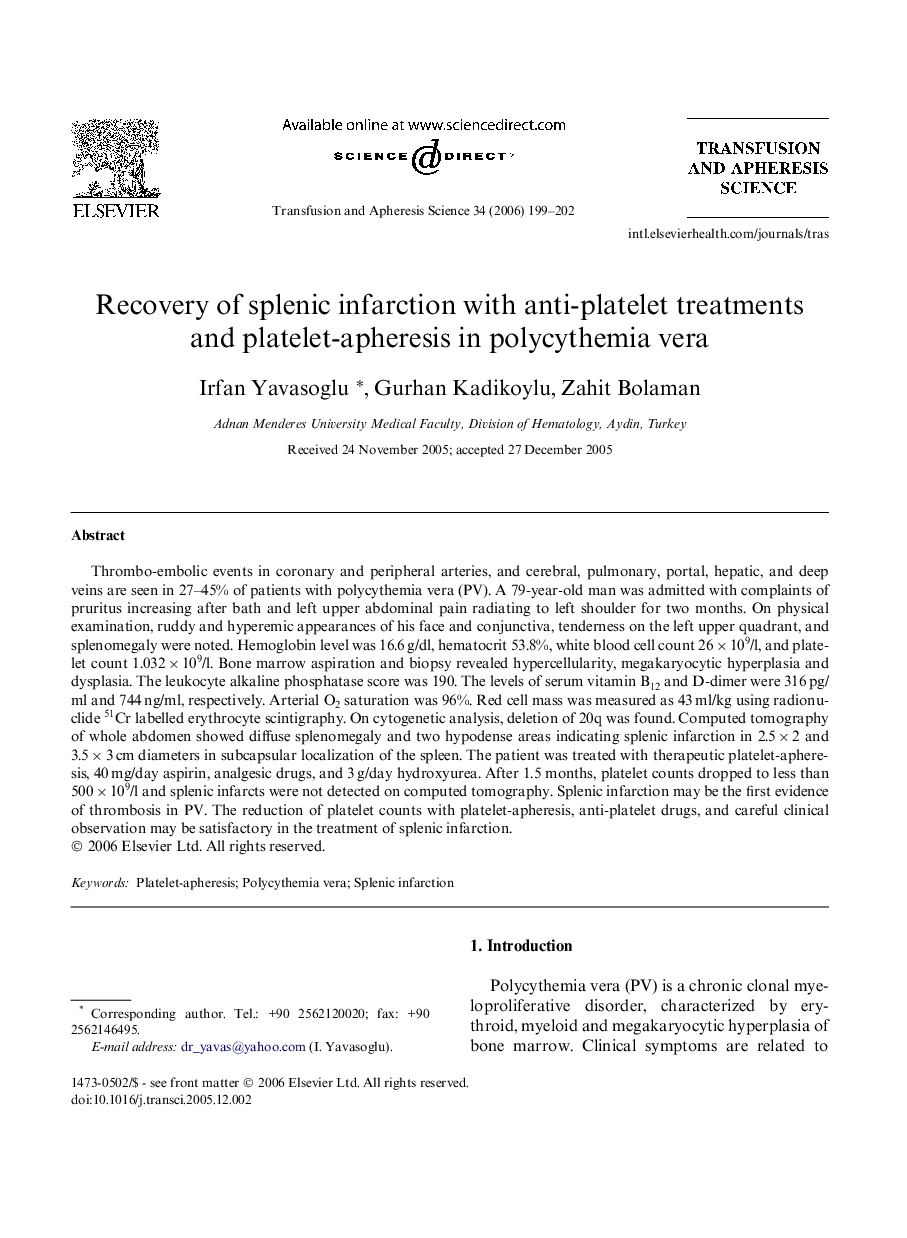| Article ID | Journal | Published Year | Pages | File Type |
|---|---|---|---|---|
| 3336420 | Transfusion and Apheresis Science | 2006 | 4 Pages |
Abstract
Thrombo-embolic events in coronary and peripheral arteries, and cerebral, pulmonary, portal, hepatic, and deep veins are seen in 27-45% of patients with polycythemia vera (PV). A 79-year-old man was admitted with complaints of pruritus increasing after bath and left upper abdominal pain radiating to left shoulder for two months. On physical examination, ruddy and hyperemic appearances of his face and conjunctiva, tenderness on the left upper quadrant, and splenomegaly were noted. Hemoglobin level was 16.6Â g/dl, hematocrit 53.8%, white blood cell count 26Â ÃÂ 109/l, and platelet count 1.032Â ÃÂ 109/l. Bone marrow aspiration and biopsy revealed hypercellularity, megakaryocytic hyperplasia and dysplasia. The leukocyte alkaline phosphatase score was 190. The levels of serum vitamin B12 and D-dimer were 316Â pg/ml and 744Â ng/ml, respectively. Arterial O2 saturation was 96%. Red cell mass was measured as 43Â ml/kg using radionuclide 51Cr labelled erythrocyte scintigraphy. On cytogenetic analysis, deletion of 20q was found. Computed tomography of whole abdomen showed diffuse splenomegaly and two hypodense areas indicating splenic infarction in 2.5Â ÃÂ 2 and 3.5Â ÃÂ 3Â cm diameters in subcapsular localization of the spleen. The patient was treated with therapeutic platelet-apheresis, 40Â mg/day aspirin, analgesic drugs, and 3Â g/day hydroxyurea. After 1.5 months, platelet counts dropped to less than 500Â ÃÂ 109/l and splenic infarcts were not detected on computed tomography. Splenic infarction may be the first evidence of thrombosis in PV. The reduction of platelet counts with platelet-apheresis, anti-platelet drugs, and careful clinical observation may be satisfactory in the treatment of splenic infarction.
Keywords
Related Topics
Health Sciences
Medicine and Dentistry
Hematology
Authors
Irfan Yavasoglu, Gurhan Kadikoylu, Zahit Bolaman,
